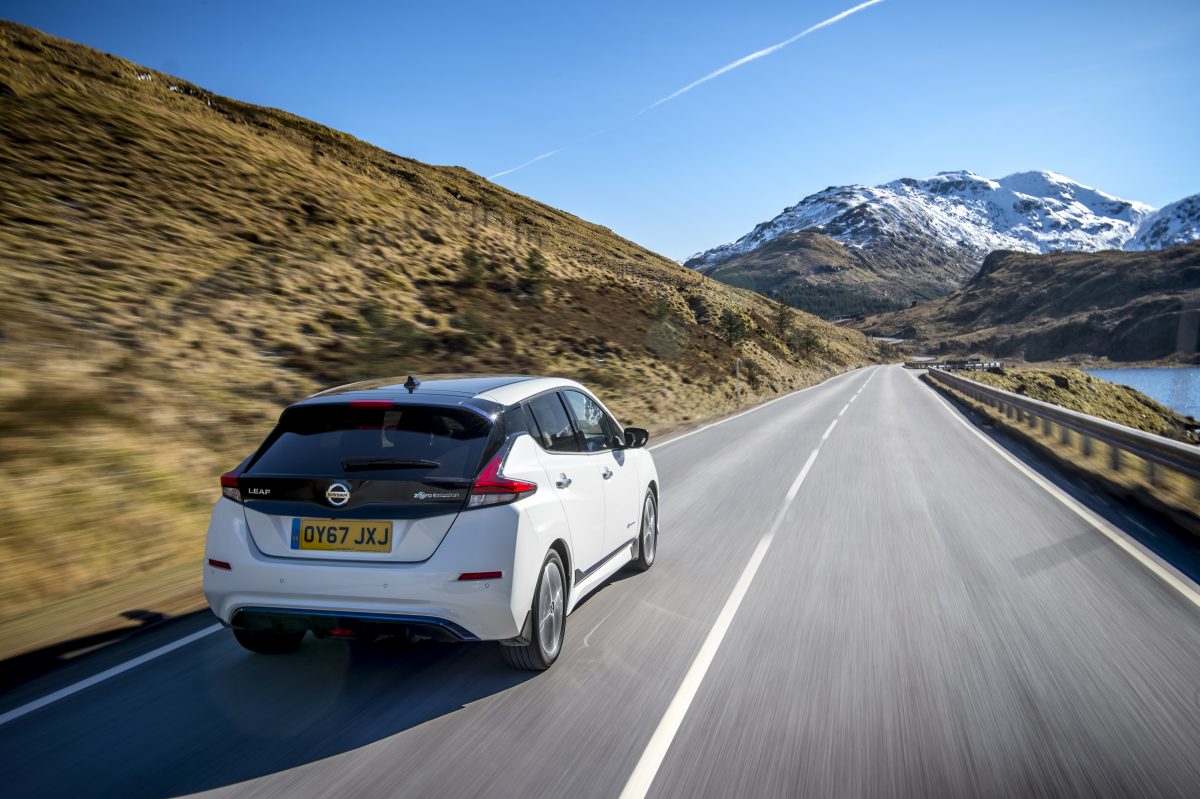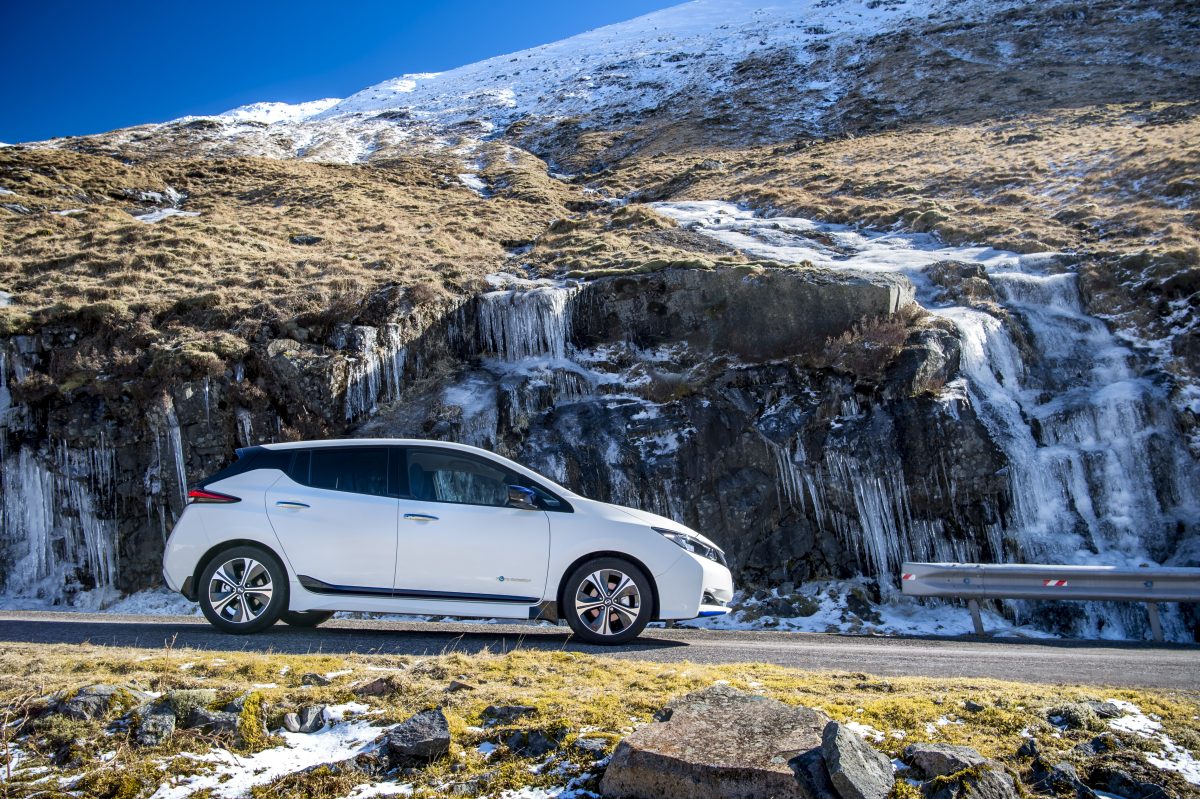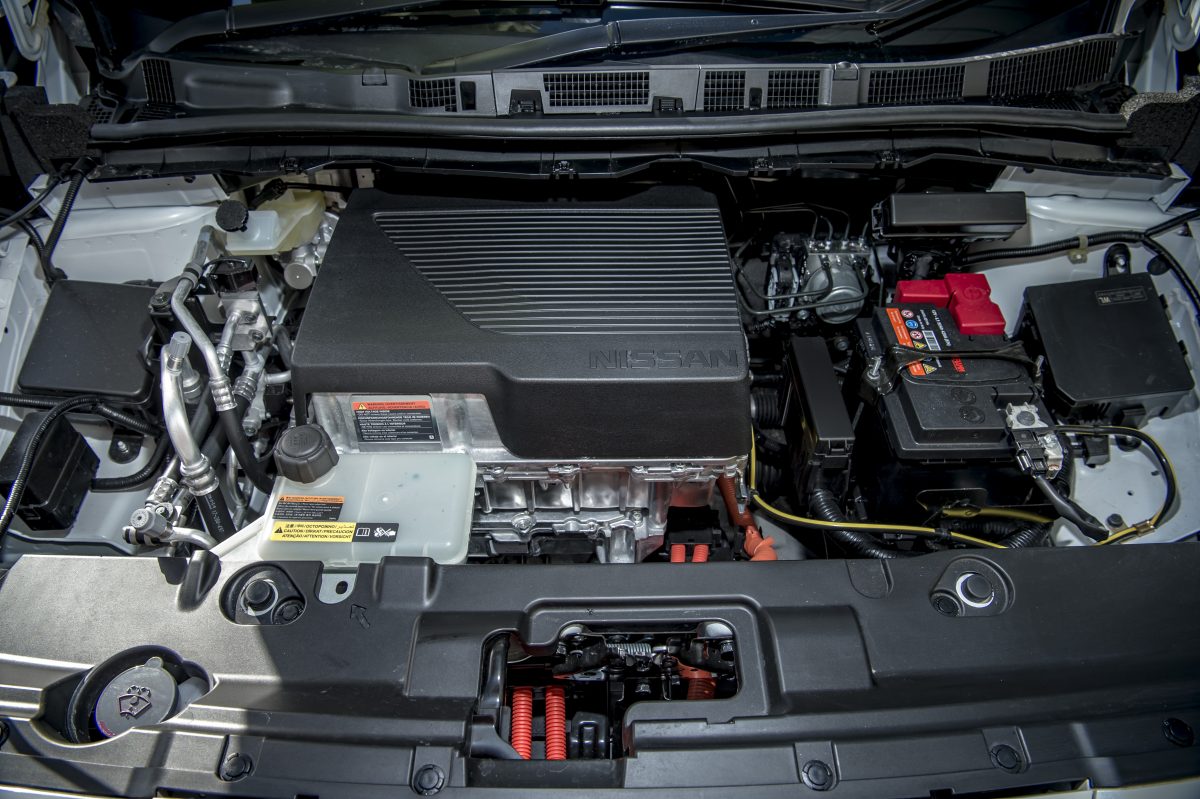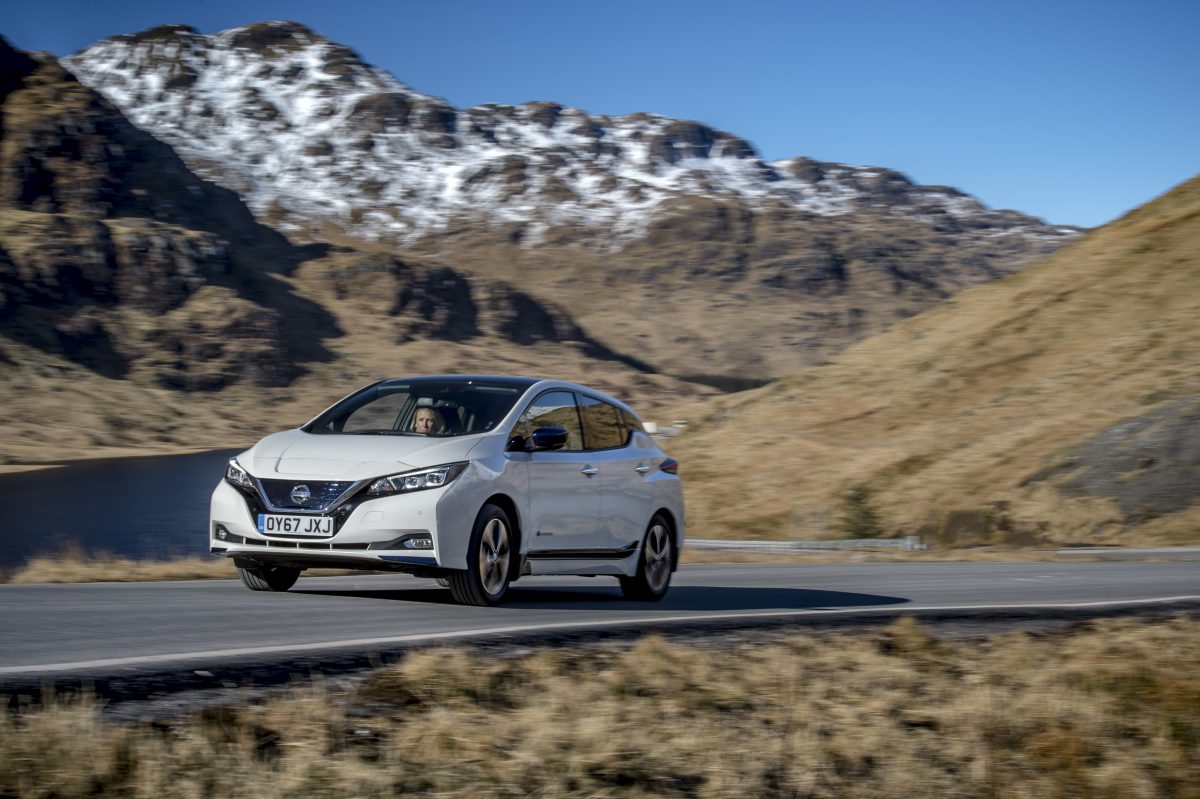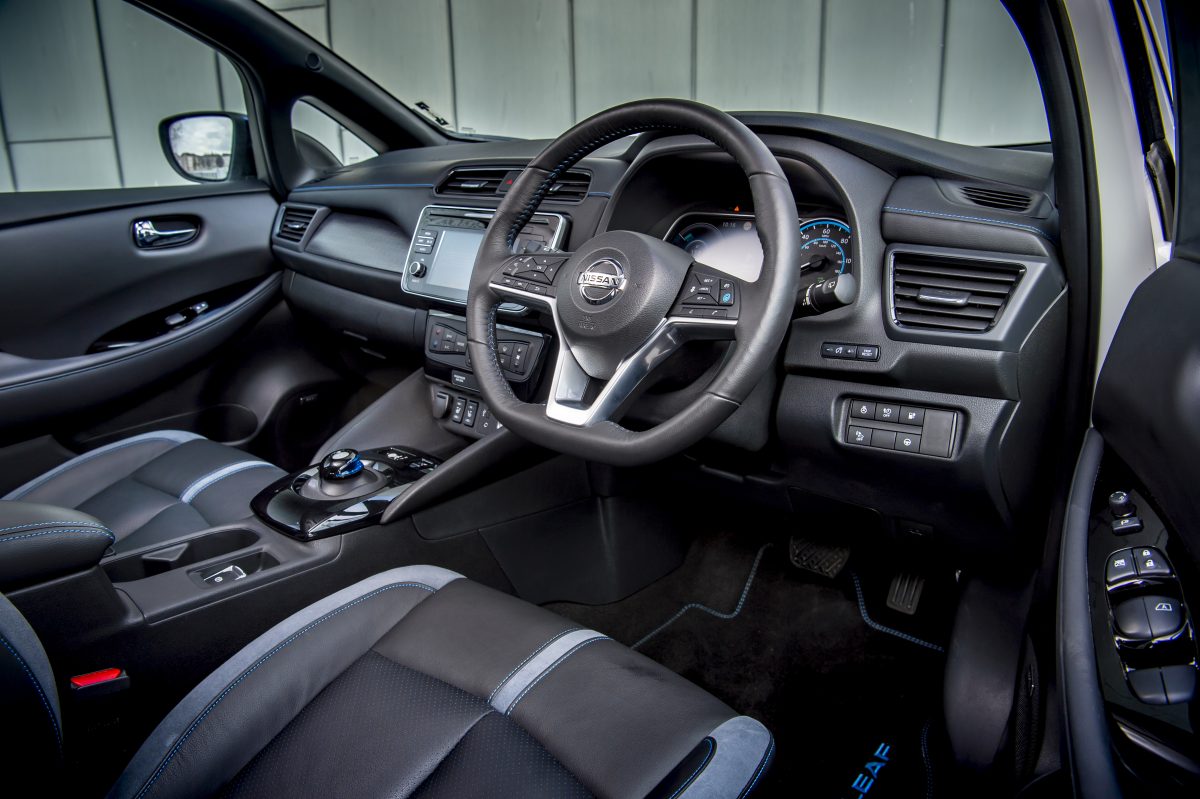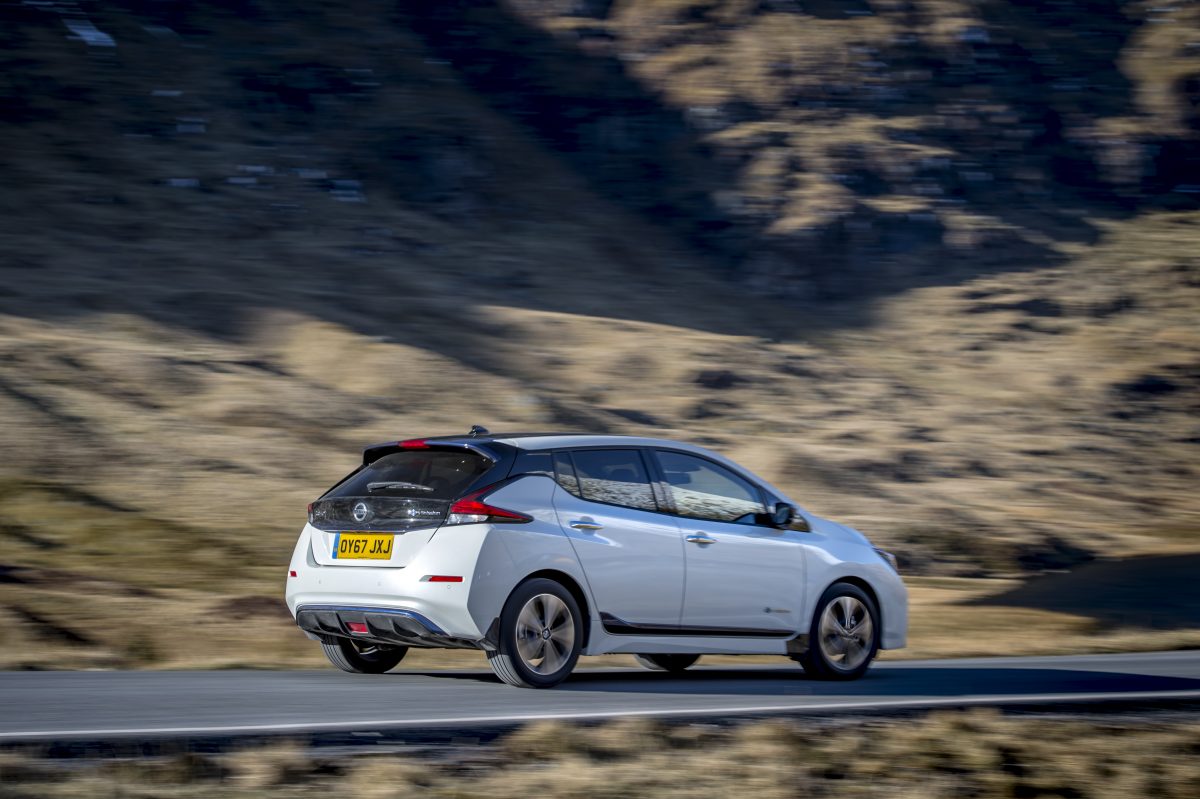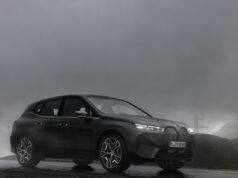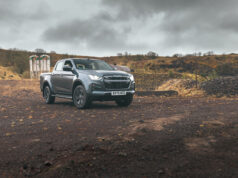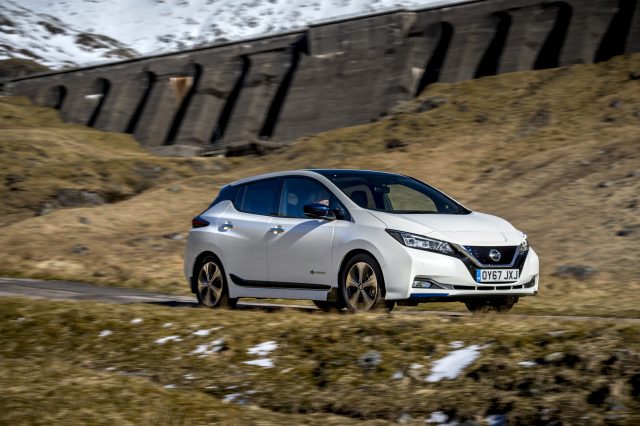
Petrolheads beware, we’re about to say positive things about the driving experience of a small electric car.
The very idea of this might have some people readying the abuse in the comments section, and if this were about the first generation car it might be warranted, but this second iteration of the Nissan Leaf is a very different machine. While the original Leaf could be classified as an “electric car”, the new one is just “a car” that happens to be powered by electricity.
What makes the difference with the new car is twofold; looks and power.
We’ll talk more about its looks when we get the car for a longer test drive, but in short the front end now looks more like the rest of the Nissan range with the addition of their Vmotion grill. The leaf doesn’t have a particularly striking look, but it at least blends in with the fossil fuel cars in its class, and this is probably a good thing.
What was more important for this journey (100 miles with a diversion along Great Western Road in Glasgow) was range, and whether the Leaf had enough grunt to be enjoyable once we got out of the city.
This was a brave move from Nissan as while the group of assembled journalists was missing some of the boy racers found at other events, a lack of overtaking ability or a long stop for a charge wouldn’t be reported favourably. Thankfully though, the new Leaf has a 40 kWh battery and a max torque output of 320 Nm. This results in a combined WLTP range of 168 miles, with shove that’s only a little down on a Golf GTi (350 Nm).
A short cruise along the M8 motorway provided a chance to try Nissan’s ProPILOT advanced driver assistance, it wasn’t quite enough to compare it to the similar systems from Tesla and Volvo of which we’ve had more experience. Still, it operated fine at a busy time of day and took us into the city where we got the first real chance to try another bit of technology that’s new to the Leaf, e-Pedal.
e-Pedal is something that we were very sceptical of as it’s another bit of technology that reduces the amount of work the driver does. This might seem great to some people, but many of us worry that less interaction with the car equals less concentration and therefore more opportunities for accidents. We needn’t have worried, the e-Pedal is actually a great innovation.
While driving through stop/start city traffic, effective use of the e-Pedal means that you rarely have to use the brakes providing you correctly anticipate the traffic ahead of you. This actually kept us more engaged with what other road users were doing (whether this remains the case with further use, remains to be seen) as we tried to bring the car to a complete stop without ever touching the brakes.
Combining torque from the electric motor with the novelty/ease of the e-Pedal meant that our short stint of city driving was a breeze. The only problem came when we had to use the brakes when e-Pedal wasn’t slowing us down quickly enough. On the initial press of the brake there’s a short delay from the Leaf releasing the regeneration of the e-Pedal and the actual application of the foot brake. We never really got used to this over the whole drive, and it is something that Nissan really needs to develop further if all drivers are to adopt the new technology.
When we made it through the traffic and onto the open road of the A82 the Leaf’s toughest test began. Would we get left behind when accelerating away from slow corners and roundabouts? Would we be able to overtake slower traffic safely?
Fear not, with 320 Nm of instant torque, there was never any real worry. Without any gearbox to wait on you are back up to the NSL in a blink that would embarrass many petrol powered cars (we’d love to see comparative 30-50 times). Need to overtake a lorry or some other traffic that’s doing 50mph in a 60 zone? You can be round them quickly and safely – although acceleration appears to tail off a bit at the top end as the top speed is only rated at 89mph.
Cruising through fast corners the Leaf feels pretty good for something that most people would classify as a city car. A low CoG and suspension that’s 15% stiffer than the old car mean that it feels quite enjoyable to go quickly in – this was something of a surprise. Push too hard and the expected understeer starts to make an appearance, not something that most owners are likely to have a problem with.
Arriving at our hotel for the night, the absolutely stunning, Isle of Eriska, the Nissan Leaf was still showing 20% range remaining. Given that we had enjoyed some quick bits of A road along the way and had to dispatch some slower moving traffic, this is very impressive. Given some normal commuting and central belt driving duties, we think the Leaf could get close to its quoted 168 miles combined range.
We’ll go into running costs and more about the technology when we get the car for longer, but for now, it seems, you don’t need insane or ludicrous modes to have fun in a car that’s powered only by electricity.


